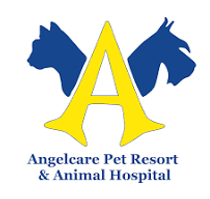Pet Food Label Guide: How to Read Your Pet’s Food Labels
- Dr. Melodie Limpach
- Oct 18
- 3 min read

Understanding pet food labels can be confusing, but it’s an important step in keeping your dog or cat healthy. The team at Pet Assure provides a helpful guide on what to look for when evaluating pet food. Here’s a summary of their key points, along with tips from our veterinarian at Angelcare Animal Hospital & Pet Resort in Mt. Pleasant, WI.
Regardless of what diet you choose I think adding fresh lightly cooked human grade meat/dairy products bought at the grocery store daily is a great way to help ensure sources of micro nutrients that are often destroyed in the processing of any food that will stay on your shelf for months or years. So make your dog and cat happy and add about 4 oz of beef, chicken, pork, sardines, tuna, cod, salmon, eggs, cottage cheese, or yogurt to their meals daily.
Key Points on Pet Food Labels:
Nutritional Adequacy Statement
Look for a statement that confirms the food meets the nutritional levels established by the AAFCO (Association of American Feed Control Officials). This ensures your pet is getting complete and balanced nutrition.
Ingredients List
Ingredients are listed by weight, with the heaviest first. Pay attention to high-quality proteins and whole-food ingredients. Avoid foods with soy, peas and lentil proteins.
Soy protein and its phytate content can block the absorption of essential minerals like iron, zinc, and calcium, primarily by binding to these minerals in the digestive tract.
Boutique dog foods that contain high levels of ingredients such as peas, lentils, and other legumes (pulses), as main ingredients, particularly in "grain-free" diets, have been linked to causing a potentially fatal heart disease called dilated cardiomyopathy (DCM).
Guaranteed Analysis
This section shows the minimum or maximum percentages of protein, fat, fiber, and moisture in the food. These numbers can help you compare products and choose one that fits your pet’s needs.
I like to stick to " the Atkins diet " strategy - High Protein, High Fat helps hair grow, skin repair, and muscles and ligaments become strong.
Feeding Guidelines
Feeding instructions provide a starting point for portion sizes, but remember every pet is unique. Factors like age, weight, and activity level should guide your feeding decisions.
Tips from Angelcare
Always consult with your veterinarian before making major diet changes.
Consider your pet’s life stage: puppies, kittens, adults, and seniors have different nutritional needs.
Look for foods that support your pet’s specific health concerns, such as skin issues, allergies, or weight management.
Give specific meals and allow access to food for a half hour -if your pet leaves food in his dish, pick it up and let him wait until the next day. Cut the portion back until the bowl is licked clean. This is the best way to keep your pet fit and trim. IF he is leaving food and not sick, you are over feeding him. Remember, even though most of us may be stuffed with Turkey at Thanksgiving, there is always room for pumpkin pie and ice cream. Your pet will always want his favorite treats - that does not mean he NEEDS the calories.
Learn More
For the full guide, visit Pet Assure: Guide to Reading Pet Food Labels
By understanding pet food labels and selecting the right diet, you can help your furry friend live a longer, healthier, and happier life. At Angelcare, we’re here to help you every step of the way—from veterinary care to nutritional advice, grooming, and more.
